Iron is a crucial mineral that plays a vital role in our body’s overall health, aiding in oxygen transport and energy production. Many people may not realize they need to boost their iron intake. This article aims to guide you through some of the best foods that are rich in iron.
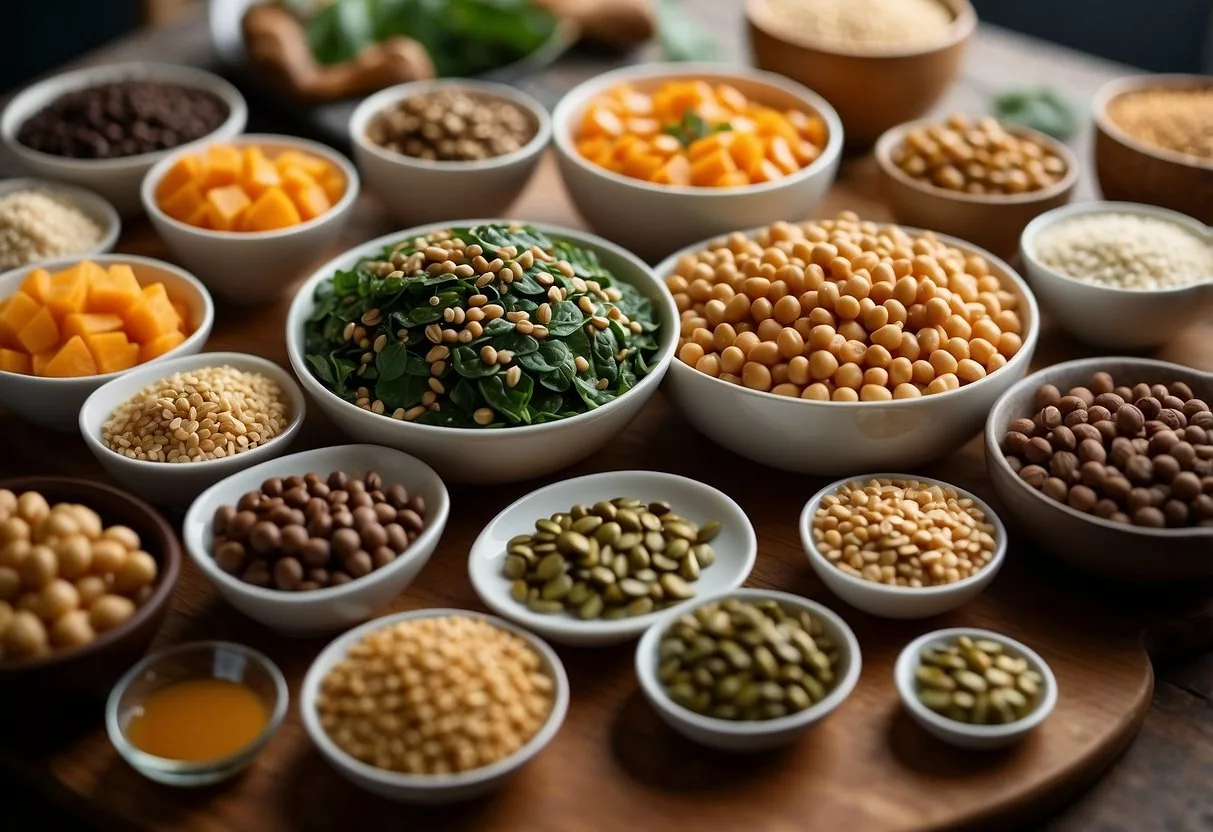
What are some of the top foods you can add to your diet to increase your iron levels? By exploring a variety of iron-rich options, you’ll be better equipped to improve your nutritional intake and support your health effectively.
1) Spinach
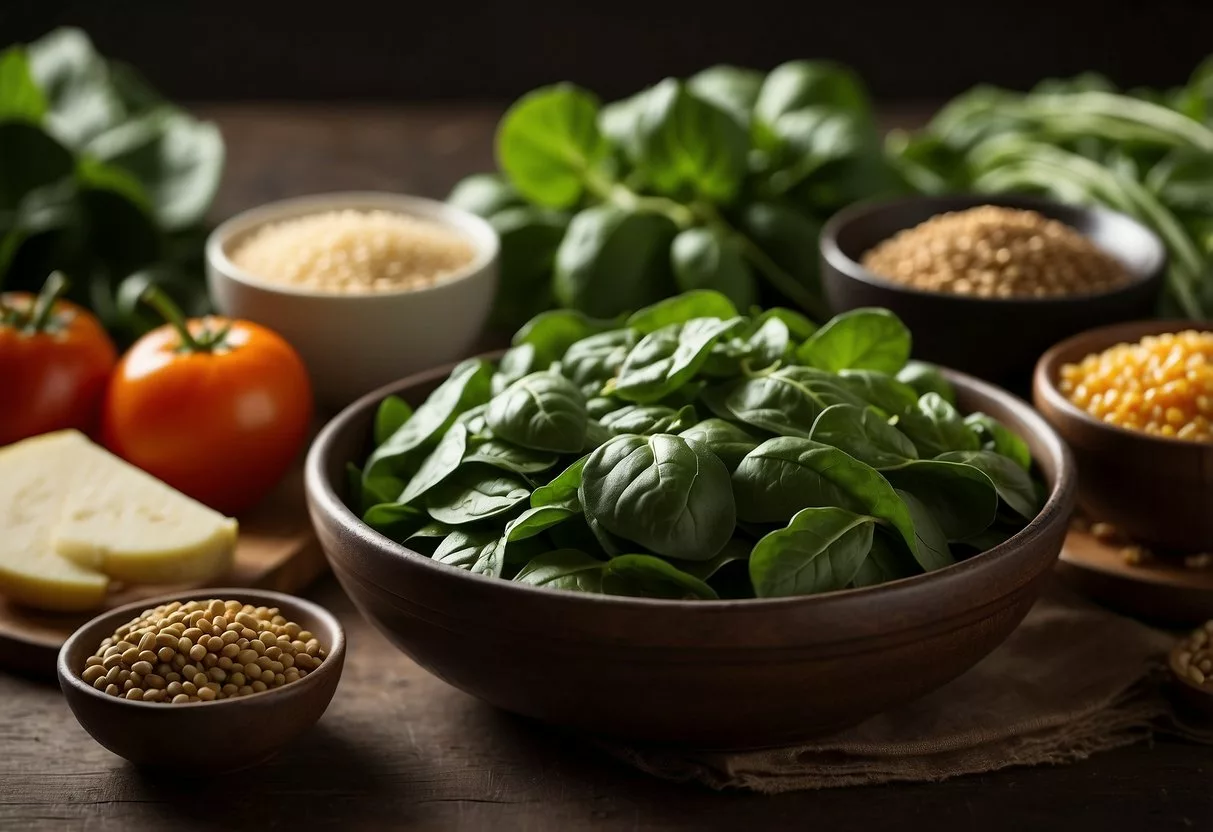
Spinach is a leafy green vegetable that is packed with iron. It is an excellent choice for boosting your daily iron intake. Just one cup of cooked spinach provides a significant amount of this essential mineral.
In addition to iron, spinach also contains vitamin C. This vitamin helps your body absorb iron more efficiently. Pairing spinach with foods high in vitamin C can further enhance iron absorption.
Spinach can be enjoyed in many ways. It can be added to salads, smoothies, or cooked dishes. Cooking spinach can reduce its oxalate content. Oxalates can interfere with the absorption of iron, so this simple step makes the mineral more available to your body.
Spinach also offers other health benefits. It can boost brain health and help maintain healthy vision. Regular consumption is linked to a reduced risk of certain chronic diseases.
For more information on the benefits of spinach, visit Cleveland Clinic’s article on the health benefits of spinach[1]. Incorporating spinach into your diet is a simple and effective way to improve your iron levels and overall health.
2) Red Meat
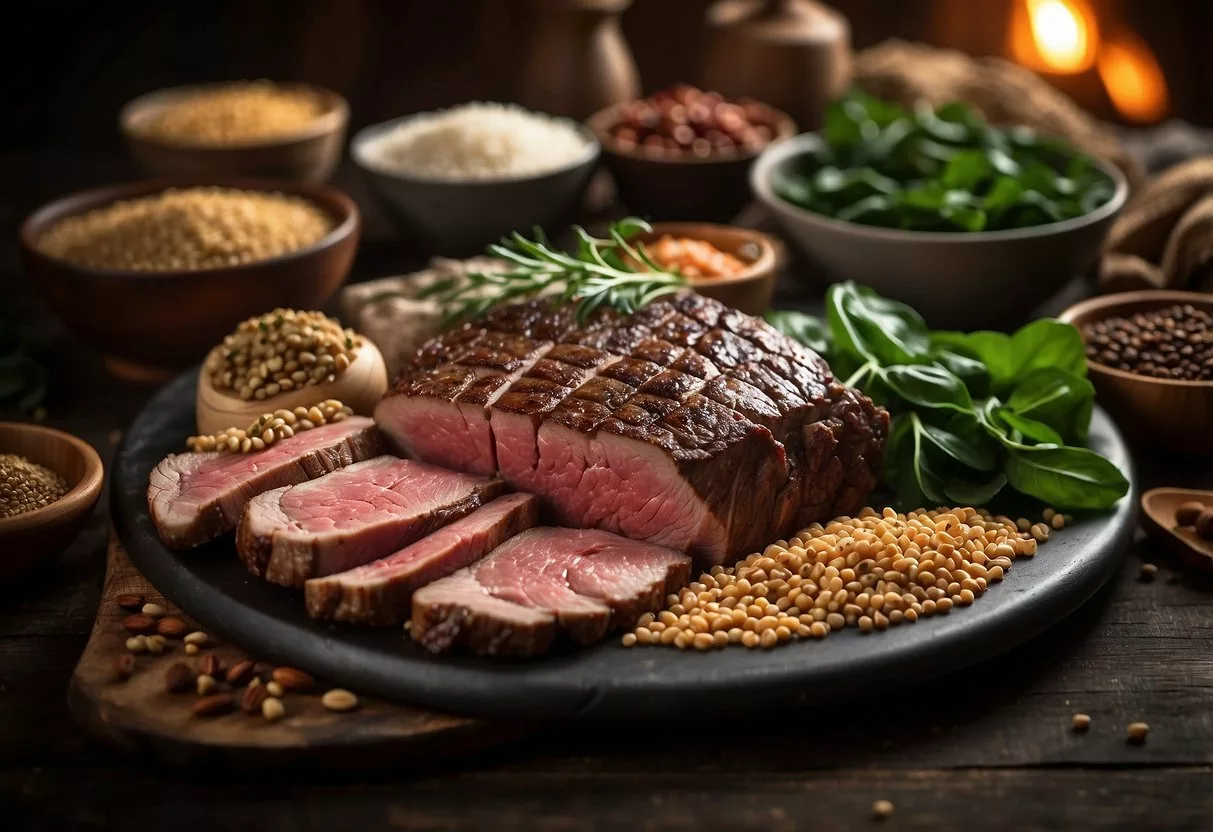
Red meat is a powerful source of heme iron. Heme iron is easier for the body to absorb compared to non-heme iron.
Different types of red meat have different amounts of iron. For example, a 100-gram serving of cooked ground beef contains about 2.47 mg of iron.
Including red meat in the diet can help prevent iron deficiency anemia. Cooked ground beef can be an effective way to boost iron intake.
Lamb and pork are also rich in iron and provide other nutrients like protein, zinc, and B vitamins. These nutrients are important for maintaining overall health and strength.
When consuming red meat, it’s helpful to pair it with foods high in vitamin C. This can increase iron absorption in the body.
It’s important to eat red meat in moderation and choose lean cuts to maintain a balanced diet. This ensures you get the benefits without too much saturated fat.
3) Lentils
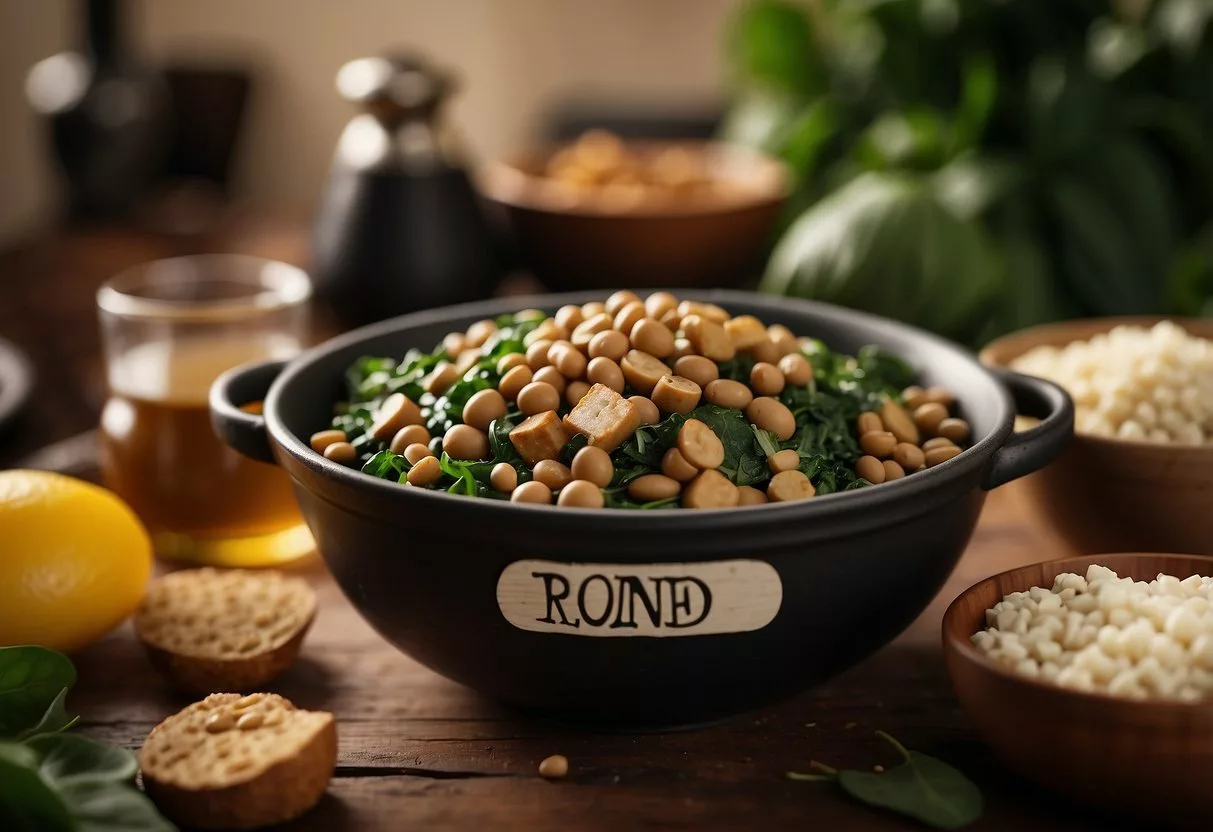
Lentils are a great source of iron. Both vegetarians and meat-eaters can benefit from their nutrient content. One cup of cooked lentils provides about 37% of the Daily Value (DV) for iron.
Not only are they rich in iron, but lentils also contain protein and fiber. They are convenient to cook and can be added to a variety of dishes, from soups to salads.
Combining lentils with foods high in vitamin C, like tomatoes or green vegetables, can help maximize iron absorption. This makes lentils not just an iron-rich choice, but also a versatile one for any meal.
4) Turkey
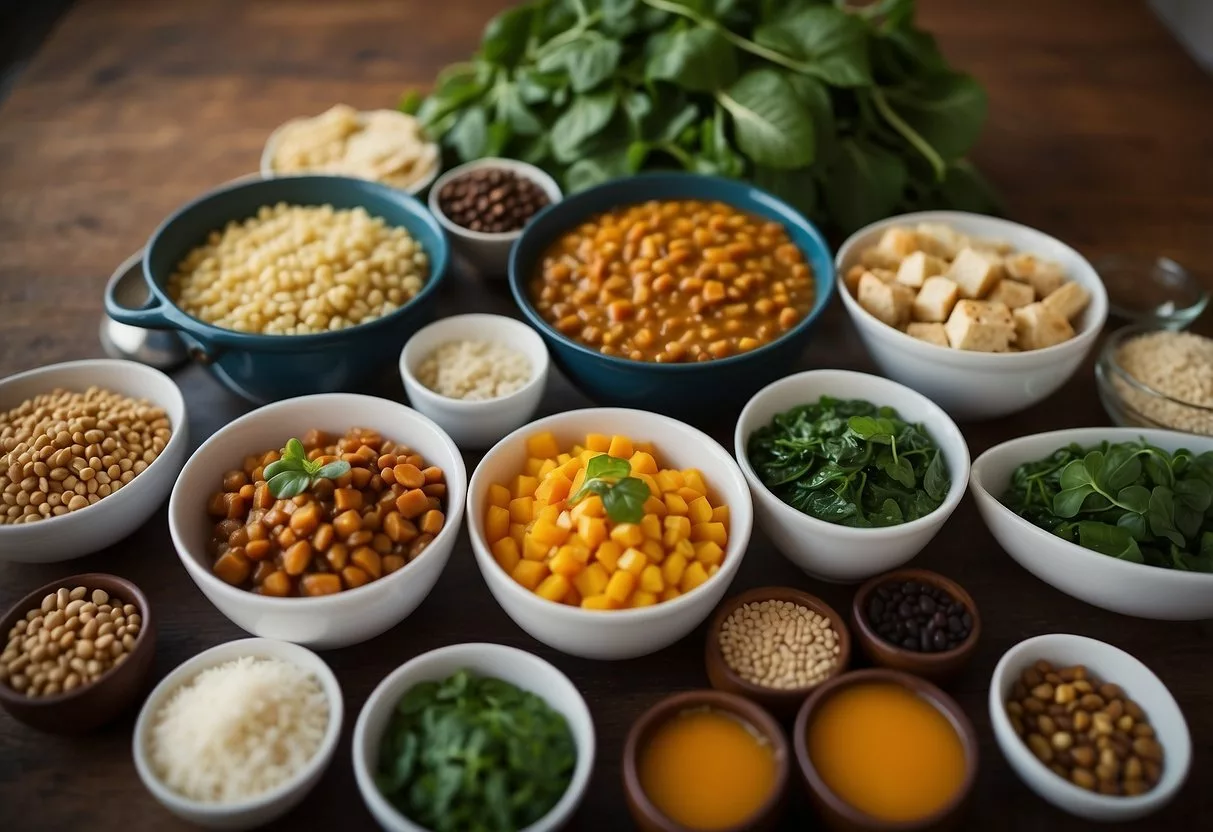
Turkey is a great source of heme iron. This type of iron is easier for the body to absorb compared to non-heme iron found in plant-based foods.
A 3.5-ounce (100-gram) serving of dark turkey meat offers about 1.8 milligrams of iron. This amount is roughly 10% of the daily value needed.
Eating turkey can also provide a good amount of protein, vitamins, and minerals. It is low in fat and can be prepared in various ways, such as roasting, grilling, or adding to sandwiches.
Turkey also contains other essential nutrients like zinc, potassium, and B vitamins. These nutrients help with overall health and energy levels.
For those looking to increase their iron intake, adding turkey to meals can be a delicious and nutritious option. Combining it with foods high in vitamin C, like bell peppers or citrus fruits, can boost iron absorption.
For more information on iron-rich foods, check out this list of foods high in iron. This will give you more options to keep your diet balanced and your iron levels in check.
5) Quinoa
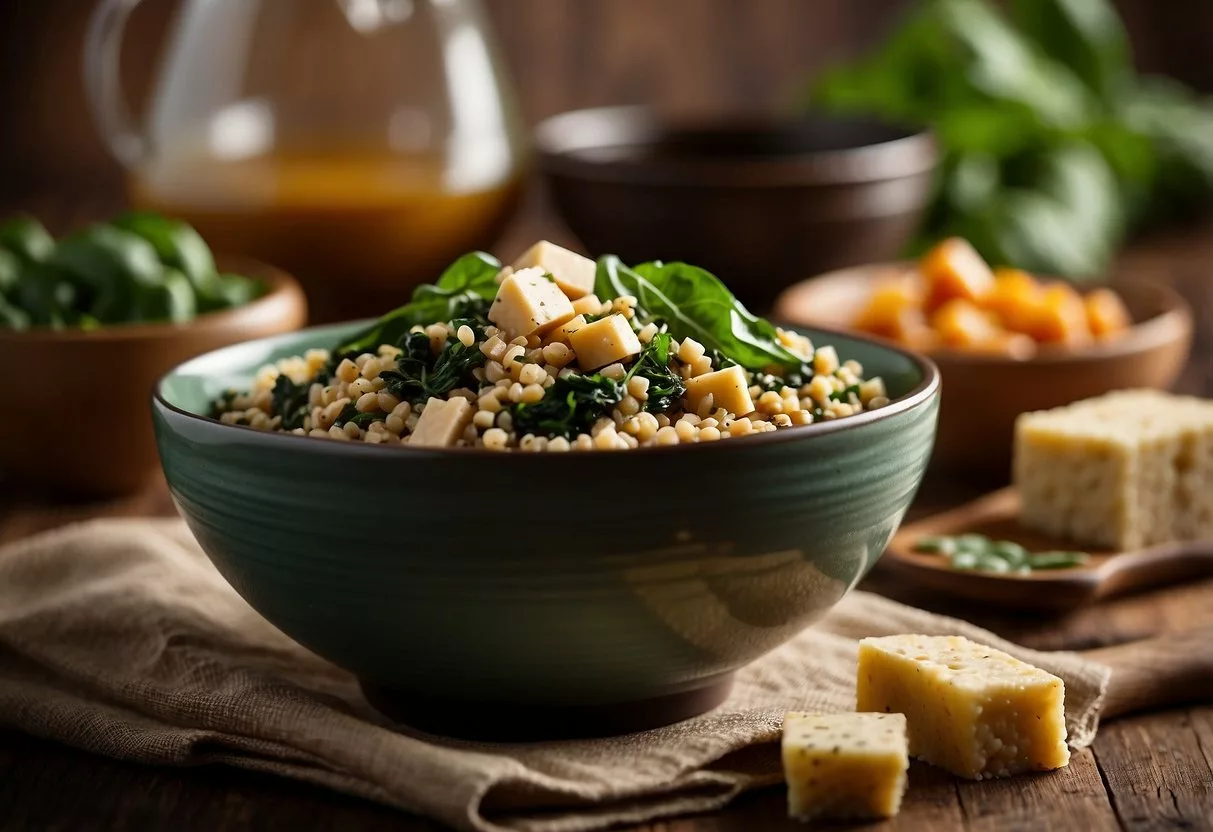
Quinoa is a versatile grain that is high in iron. It offers around 2.8 mg of iron per cup of cooked quinoa.
Besides iron, quinoa is packed with protein, fiber, and essential vitamins and minerals. It contains manganese, magnesium, phosphorus, and folate.
This ancient grain is gluten-free, making it a great option for those with gluten intolerance. It is also easy to incorporate into various dishes, such as salads, soups, and side dishes.
Quinoa also stands out for its impressive nutritional profile. Along with iron, it provides about 222 calories, 21% carbohydrates, 14.6% protein, and 14.2% fat in each cup of cooked quinoa.
Consuming quinoa can help boost daily fiber intake. One cup provides around 5 grams of fiber, which can aid in digestion and help you feel full longer.
To maximize iron absorption, consider combining quinoa with foods high in vitamin C, such as tomatoes, greens, or citrus fruits. This helps the body absorb non-heme iron more efficiently.
Adding quinoa to a diet can be an easy way to boost iron intake while also benefiting from its other nutritional properties. Quinoa can be found in most grocery stores and is simple to prepare, making it a convenient choice for healthy eating.
6) Pumpkin Seeds
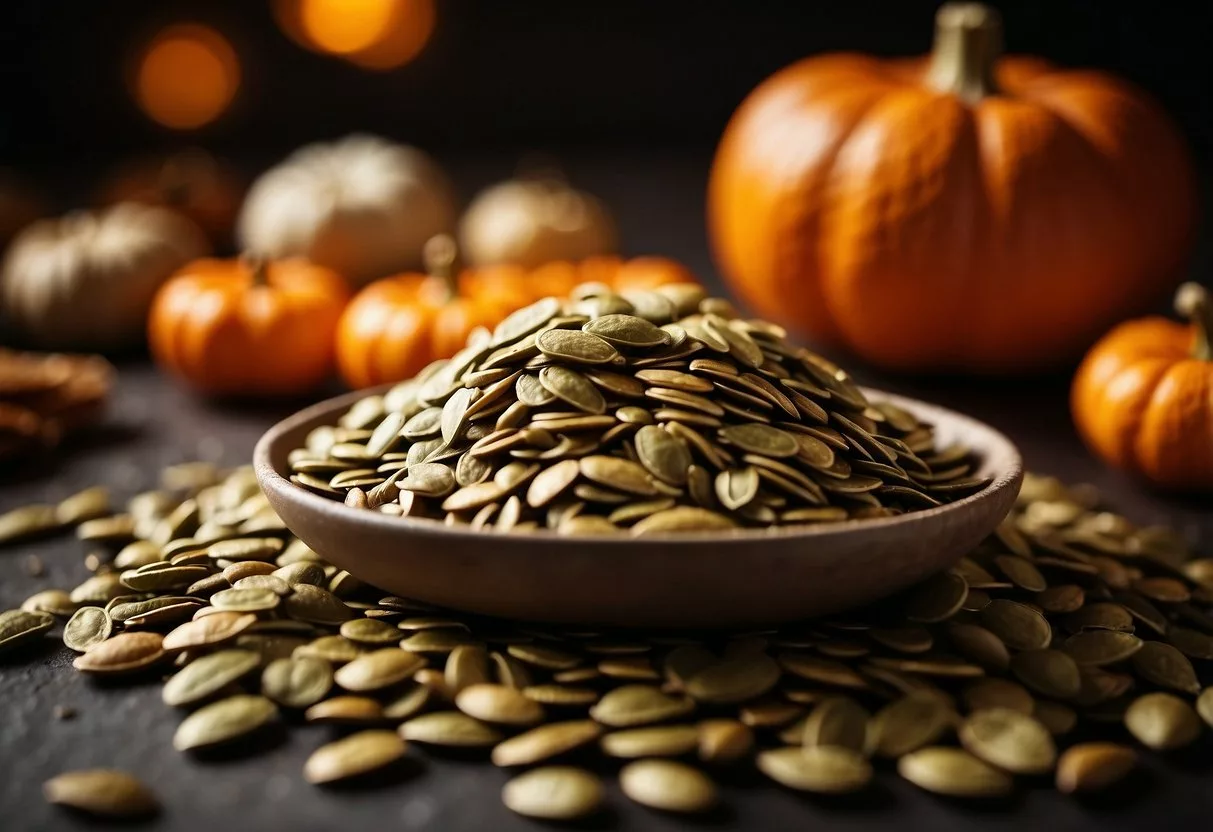
Pumpkin seeds are a great source of iron. A 1-ounce serving contains 2.5 mg of iron, which is 14% of the daily value. These seeds can be easily added to various dishes.
They are not just rich in iron but also offer vitamin K, zinc, and manganese. This mix of nutrients makes pumpkin seeds a healthy option for many diets.
Pumpkin seeds can be enjoyed in different ways. They can be added to trail mix, baked into bread, or sprinkled on top of salads. This makes them a versatile ingredient for meals and snacks.
Eating pumpkin seeds can also provide other health benefits. They are high in antioxidants, which help protect cells from damage. This adds to their appeal as a nutritious food choice.
Pumpkin seeds are also low in calories. A 1-ounce serving has around 160 calories, which makes them a light snack option. This is helpful for those looking to manage their calorie intake.
7) Tofu
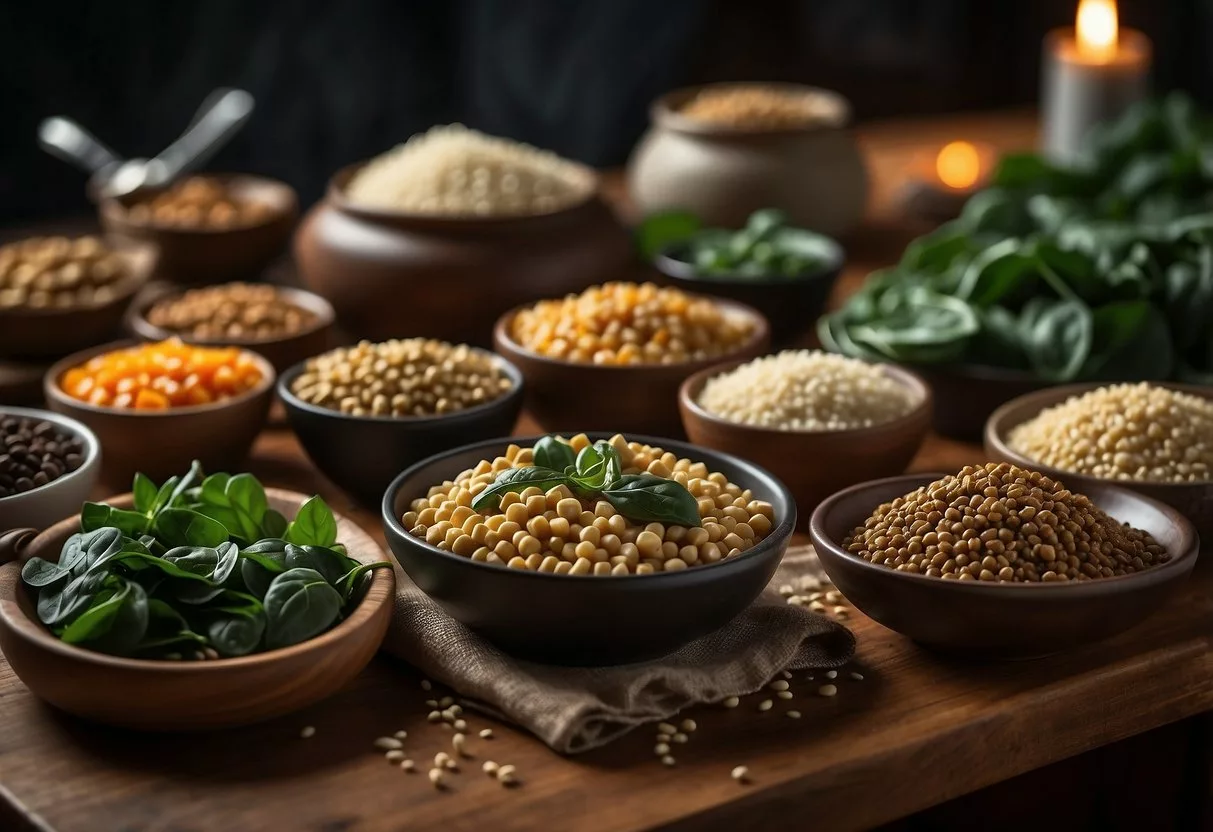
Tofu is a soy-based food that is popular among vegetarians and vegans. It contains about 3.4 mg of iron per half-cup serving. This makes it a great choice for boosting daily iron intake.
Tofu is versatile and can be used in various dishes. It can be added to stir-fries, salads, soups, or even grilled.
It’s also a good source of protein and other essential nutrients. Including tofu in meals can help maintain a balanced diet, especially for those following plant-based diets.
Tofu can be found in most grocery stores and comes in different textures, such as soft, firm, or extra-firm. It’s easy to cook and can take on many flavors.
For those looking to increase their iron intake, tofu offers an easy and nutritious option. Incorporating it into meals can help meet daily nutritional needs without much effort.
8) Broccoli
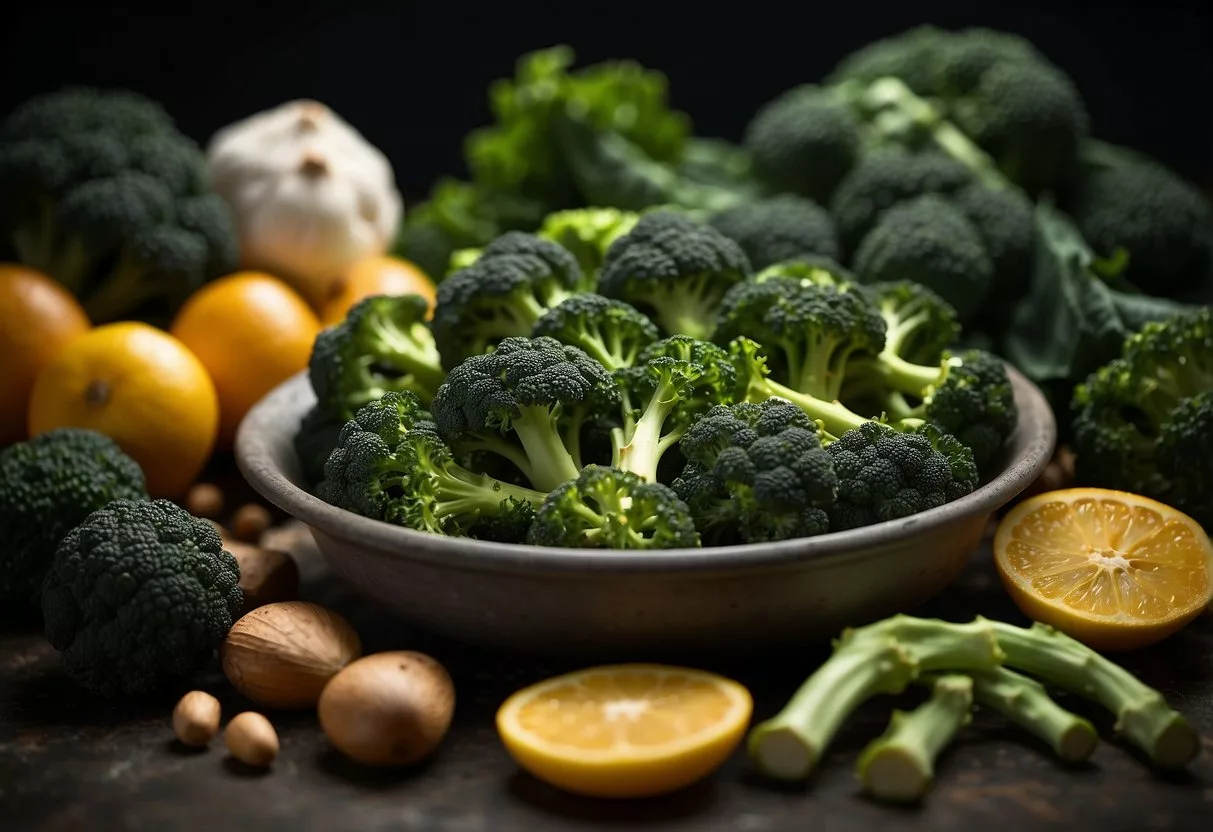
Broccoli is a nutritious vegetable that is rich in iron. A 1-cup serving of cooked broccoli contains about 1 mg of iron, which is approximately 6% of the daily value (DV).
In addition to iron, broccoli is packed with other essential nutrients. It contains vitamins A, C, and K, fiber, and various antioxidants. These nutrients help support overall health.
Broccoli is also low in calories. It provides just 35 calories per cup, making it an excellent choice for those looking to keep their calorie intake in check. Besides, broccoli is mostly water, which helps keep you hydrated.
Including broccoli in your diet is simple. It can be steamed, roasted, or added to salads and stir-fries. This versatility makes it easy to incorporate into various meals and enjoy its health benefits.
9) Dark Chocolate
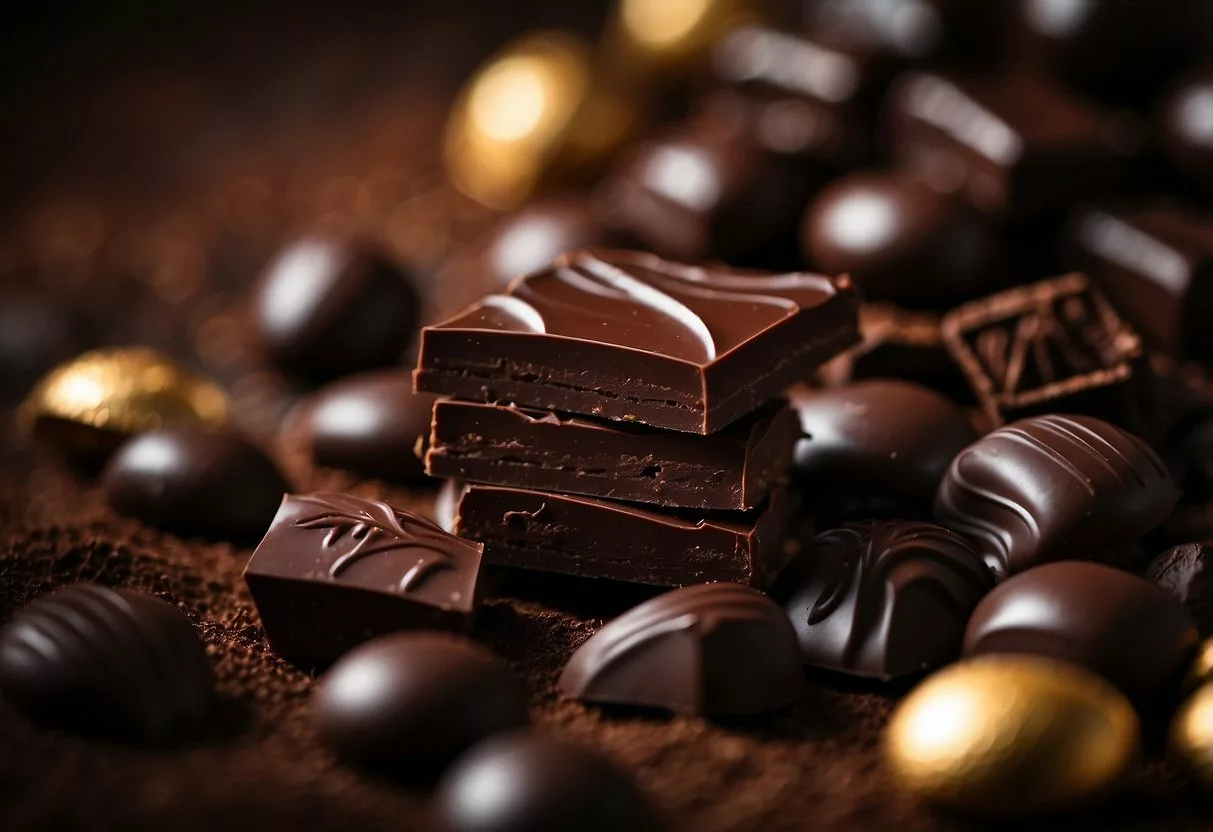
Dark chocolate is a delicious treat that also provides a good amount of iron. A bar with 70-85% cocoa solids contains about 2.3 milligrams of iron per ounce. This makes it a tasty way to help meet daily iron needs.
Besides being rich in iron, dark chocolate with a high cocoa content offers other health benefits. It has antioxidants that can help protect the body from damage caused by free radicals.
However, it’s important to consume dark chocolate in moderation. It can be high in calories and fat. A 101-gram bar of dark chocolate provides 604 calories and 43 grams of fat. Be mindful of portions and choose chocolate with higher cocoa percentages for the best benefits.
10) Oysters
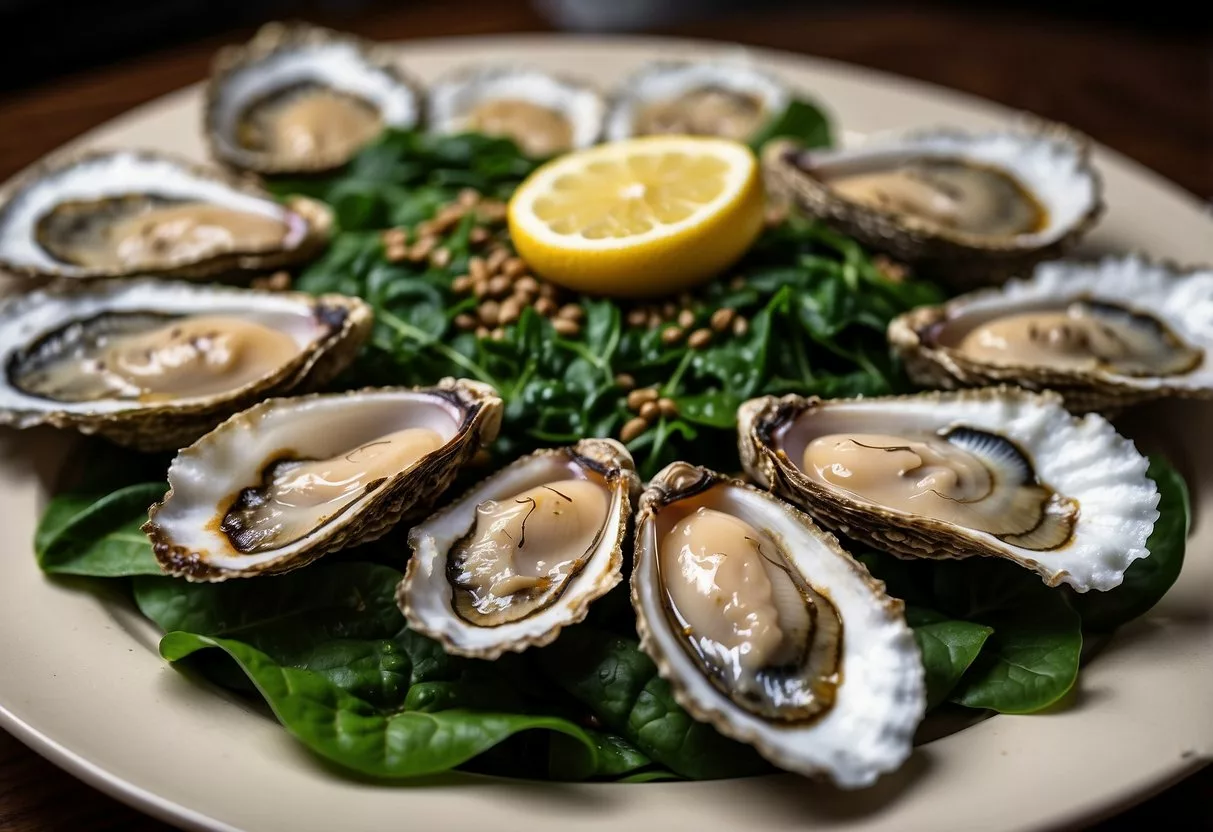
Oysters are an excellent source of iron. A three-ounce serving of cooked oysters contains around 8 mg of iron[2], which is 44% of the daily value. This makes them a great option for increasing iron intake.
In addition to being rich in iron, oysters are low in calories. A three-ounce portion has just 139 calories[3]. They also provide protein, vitamins B12 and C, riboflavin, and niacin.
Oysters can be enjoyed in various ways. They can be eaten raw, cooked, or added to dishes like soups and stews. This versatility makes them easy to incorporate into different meals, contributing to a balanced diet.
Eating oysters is beneficial not only for their iron content but also for their other nutrients. These nutrients support overall health, including immune function and energy levels.
Importance of Iron in the Diet

Iron is a crucial mineral for the body. It supports many functions, including helping red blood cells transport oxygen. Knowing how much iron to consume daily is vital for maintaining health.
Role of Iron in the Body
Iron plays a key role in forming hemoglobin, a protein in red blood cells that carries oxygen from the lungs to the rest of the body. Without sufficient iron, the body cannot produce enough hemoglobin.
Iron also contributes to myoglobin, a protein that supplies oxygen to muscles. It is essential for growth, development, cell functioning, and hormone synthesis. Adequate iron levels help maintain energy and overall vitality.
Daily Recommended Intake
The daily recommended intake of iron varies by age, sex, and life stage. For example, adult men typically need about 8 mg per day, while women aged 19 to 50 need around 18 mg per day due to menstrual losses. Pregnant women should aim for 27 mg daily.
Infants, children, and teens also have specific needs based on their growth rates. Vegetarians may require nearly double the recommended amounts because non-heme iron from plant sources is less easily absorbed by the body. Multiple factors, such as health status and diet, can affect iron needs.
Types of Iron
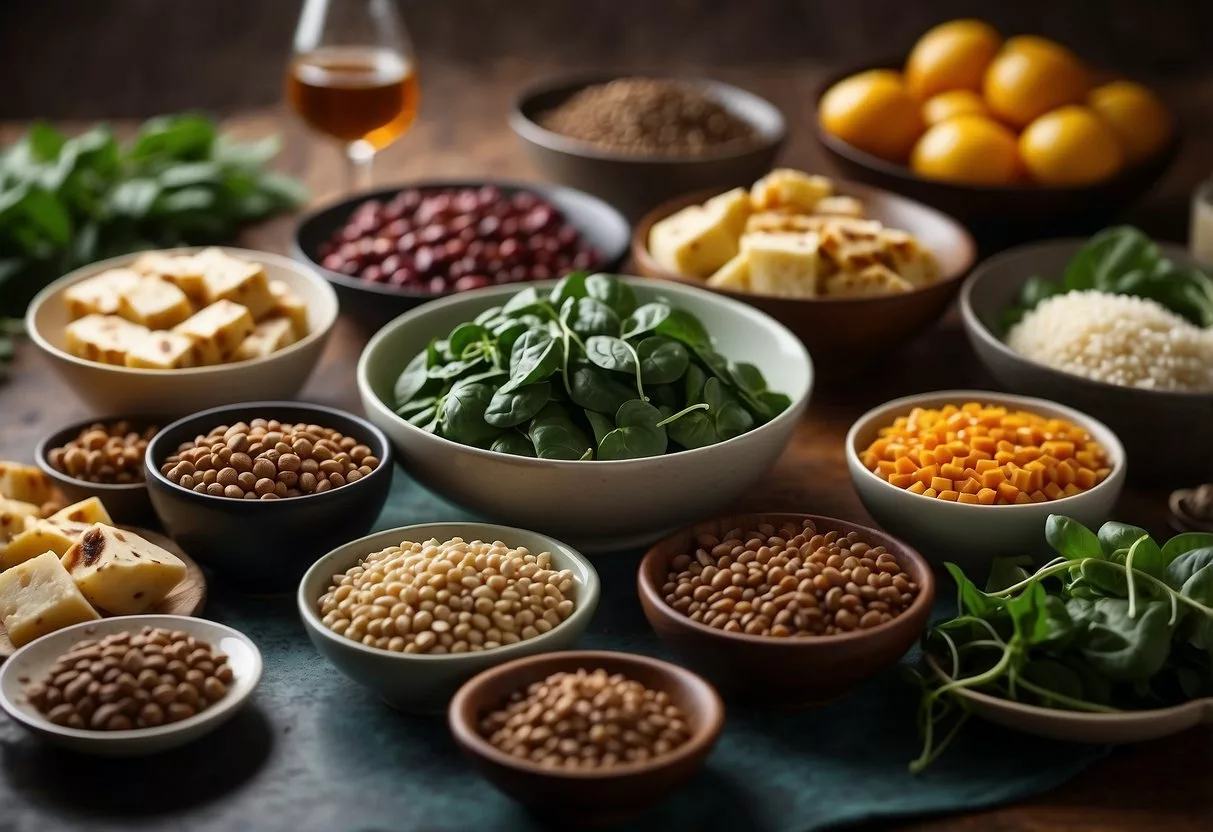
Iron is an essential mineral found in various foods. It exists in two forms: heme iron and non-heme iron. Each type varies in sources and how the body absorbs it.
Heme Iron
Heme iron is found in animal-based foods. It is more easily absorbed by the body compared to non-heme iron. This type makes up about 40% of the iron in meat, poultry, and fish.
Some rich sources of heme iron include beef liver, chicken liver, and clams. For example, clams are high in iron, providing about 29.45 mg per 100 grams. Red meats like beef and lamb also contain significant amounts.
Since it’s easily absorbed, heme iron is crucial for maintaining healthy iron levels, especially in individuals with higher iron needs.
Non-Heme Iron
Non-heme iron is found mainly in plant-based foods and fortified products. It is not absorbed as efficiently as heme iron. Sources include vegetables, grains, and nuts. Foods like spinach, lentils, and beans are high in non-heme iron. For instance, dark leafy greens such as spinach and kale are rich in iron.
To enhance absorption, it’s beneficial to consume non-heme iron with vitamin C-rich foods like oranges or tomatoes. Cooking in cast iron pans can also increase the non-heme iron content of food. This form is vital for vegetarians and vegans to meet their iron needs.
Enhancing Iron Absorption
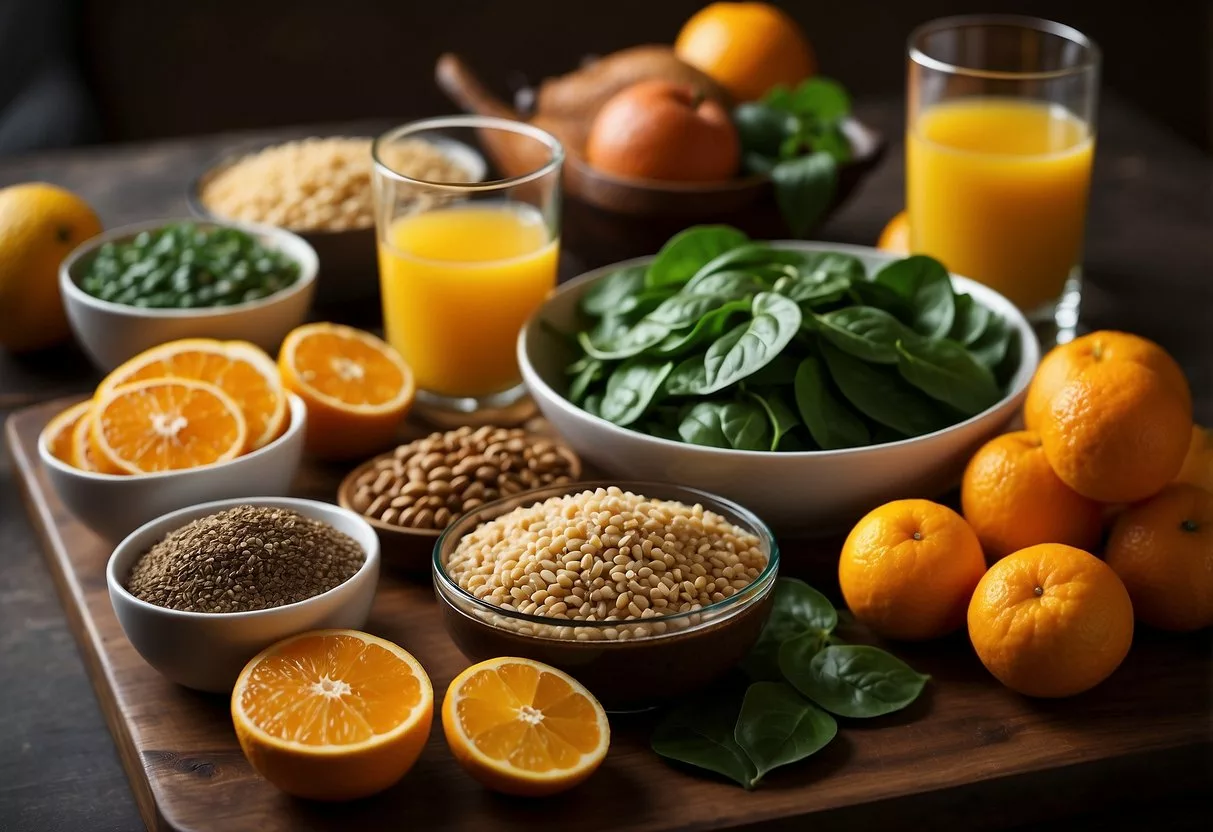
To effectively boost iron levels in the body, it is important to eat the right foods and pair them correctly. Iron absorption can be maximized by combining certain foods and avoiding others that inhibit iron uptake.
Pairing Iron with Vitamin C
Pairing iron-rich foods with those high in vitamin C can greatly enhance iron absorption. Vitamin C captures non-heme iron and stores it in a form that the body can easily absorb. Foods high in vitamin C include oranges, strawberries, bell peppers, and broccoli.
For example, adding bell peppers or tomatoes to a spinach salad can boost iron intake. Drinking a glass of orange juice with a meal containing beans or lentils can also be beneficial. Another idea is to spread some lemon juice on cooked dark leafy greens.
Including these combinations in your diet can help to improve iron absorption and support overall health.
Avoiding Inhibitors of Iron Absorption
Certain foods and substances can inhibit iron absorption. Some common inhibitors include tea, coffee, dairy products, and foods high in calcium, polyphenols, or phytates.
Tea and coffee contain tannins which can decrease iron absorption. It’s recommended to drink these beverages between meals instead of during meals. Dairy products and foods high in calcium, like cheese and yogurt, should not be consumed in large quantities with iron-rich meals.
Phytates, found in whole grains and legumes, can also reduce iron absorption. Soaking beans or choosing leavened bread can help to reduce the impact of phytates.
By avoiding these inhibitors during iron-rich meals, the body can absorb iron more effectively.
Frequently Asked Questions
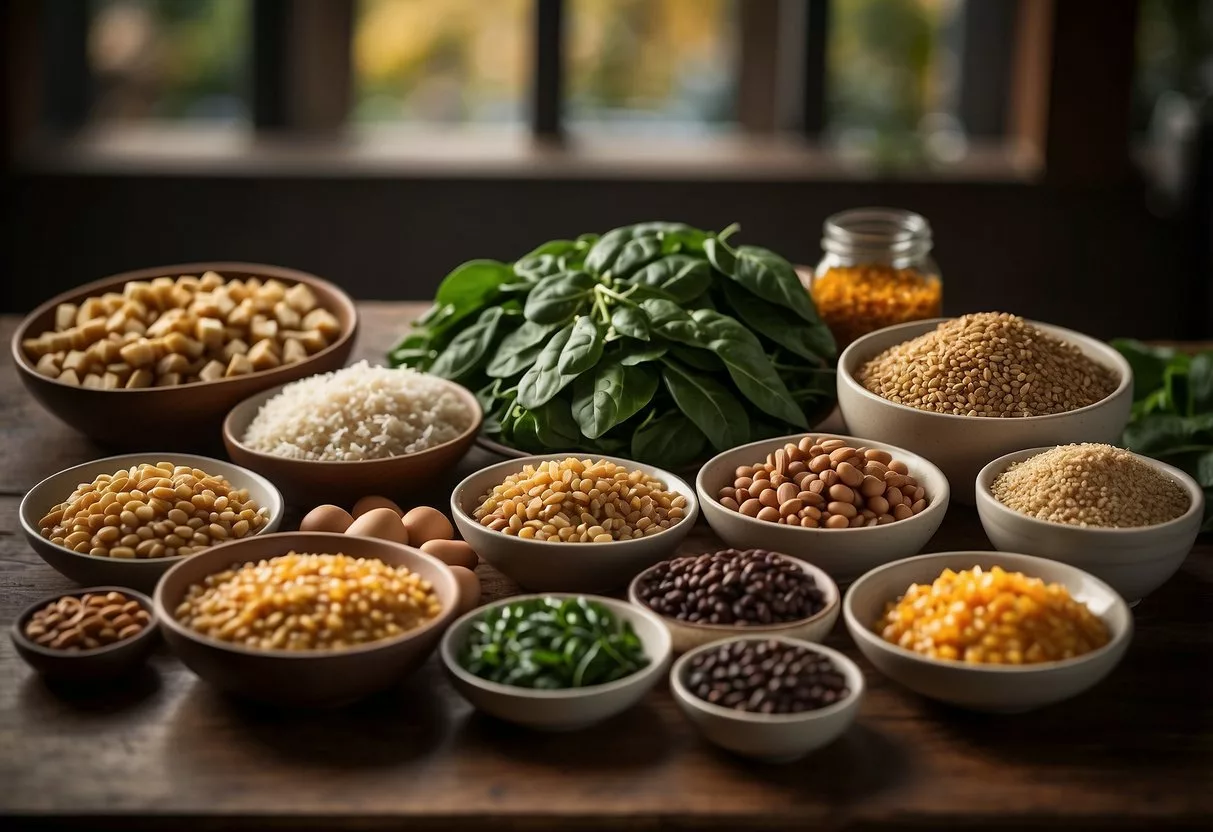
Iron-rich foods are essential for preventing and combating anemia. Vegetables and fruits can also be excellent sources of iron and are particularly useful for vegetarians.
What are the top iron-rich foods to combat anemia?
Spinach and red meat are highly recommended. Spinach provides a good amount of non-heme iron, while red meat offers heme iron, which is more easily absorbed by the body. Including lentils and turkey in the diet can also help improve iron levels.
Which vegetables have the highest iron content?
Dark leafy greens like kale and spinach[4] are very high in iron. Other options include collard greens, dandelion greens, and cabbage. Incorporating these into meals can significantly boost iron intake.
How can one increase their iron levels rapidly?
Combining iron-rich foods with vitamin C-rich foods can enhance iron absorption. For instance, pairing legumes with tomatoes or citrus fruits can be effective. Additionally, consuming heme iron sources like red meat can help increase levels more quickly.
What are the best iron-rich food options for vegetarians?
Vegetarians can benefit from quinoa, spinach, lentils, and tofu. These foods are all high in iron and can help maintain adequate levels when included regularly in a vegetarian diet.
Which fruits provide a significant source of iron?
Fruits like dried apricots, prunes, and figs contain iron. These options can be great snacks to boost iron intake. Additionally, combining these with foods rich in vitamin C can help improve iron absorption.
Are there any foods that should be avoided when dealing with anemia?
Yes, foods like dairy products, coffee, and tea can inhibit iron absorption. It’s best to consume these in moderation and separate from iron-rich meals to ensure maximum iron uptake from the diet.
References
- 7 Health Benefits of Spinach. https://health.clevelandclinic.org/benefits-of-spinach Accessed November 3, 2025
- 10 iron-rich foods: List, benefits, and more. https://www.medicalnewstoday.com/articles/318413 Accessed November 3, 2025
- 15 Types of Seafood High in Iron. https://tastylicious.com/seafood-iron/ Accessed November 3, 2025
- 52 Foods High In Iron. https://health.clevelandclinic.org/how-to-add-more-iron-to-your-diet Accessed November 3, 2025
